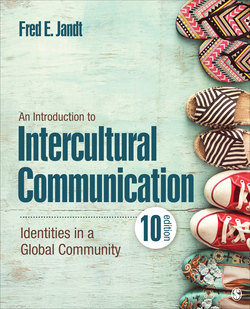Читать книгу An Introduction to Intercultural Communication - Fred E. Jandt - Страница 83
На сайте Литреса книга снята с продажи.
Stereotypes
ОглавлениеThe word stereotyping was first used by journalist Walter Lippmann in 1922 to describe judgments made about others on the basis of their ethnic group membership. Today, the term is more broadly used to refer to judgments made on the basis of any group membership. Psychologists have attempted to explain stereotyping as mistakes our brains make in the perception of other people that are similar to those mistakes our brains make in the perception of visual illusions (Nisbett, 1980). When information is ambiguous, the brain often reaches the wrong conclusion.
Who stereotypes? And who is the target of stereotyping? The answer to both questions is that anyone can stereotype and anyone can be the target of stereotyping.
Identify the stereotypes in the following examples of sign language and in sports team logos: Until recently, the sign for Japanese in American Sign Language was a twist of the little finger at the corner of the eye to denote a slanted eye. The new sign, taken from Japanese Sign Language, is a hand signal to show the shape of the Japanese islands (Costello, 1995). In Japanese Sign Language, the sign for foreigner is the index finger making a circular motion around the eye denoting “round eye.”
Are American Indian logos and mascots stereotypes? Some say the stereotypes are positive; others find them demeaning. In 2001, the U.S. Commission on Civil Rights called for an end to the use of American Indian images and team names by non–American Indian schools. Beginning in 2006, the National Collegiate Athletic Association (NCAA) prohibited 18 colleges and universities from displaying their nicknames, logos, or mascots based on American Indian imagery or references at postseason games. By 2008, the ban also applied to the uniforms of cheerleaders, dance teams, and band members at NCAA championship sites. Central Michigan, Florida State, Midwestern State, Mississippi College, and the University of Utah retained their eligibility by receiving support from the eponymous tribe. Schools under this ban include the Florida State Seminoles, the Illinois Fighting Illini, and the Utah Utes. The University of North Dakota (UND) was one of the 18 schools with an American Indian mascot, the Fighting Sioux. UND sued the NCAA and reached a settlement permitting it to retain its mascot if both the Spirit Lake and Standing Rock Sioux reservations approved. One has; one hasn’t. One said the name is a “source of pride”; the other said it “breeds prejudice.” The state legislature passed a law prohibiting the university from changing its name. The law was repealed. Supporters of the name sued the NCAA. The suit failed. A statewide referendum voted to remove the name, and the university has done so.
The National Congress of American Indians and other tribal organizations have protested the name Washington Redskins as perpetuating a demeaning stereotype. A U.S. historian has noted that Cleveland Indians, Kansas City Chiefs, and Atlanta Braves are not slurs, but Redskins has historically been an ethnic slur. The U.S. Patent and Trademark Office ruled that Redskins cannot be registered as a trademark as it is derogatory; however, in 2017, the Supreme Court ruled unanimously that not allowing disparaging names to be protected by trademark registration is an unconstitutional infringement of freedom of speech. Former team owner Jack Kent Cooke (a Canadian) said that the Redskins’ name stands for bravery, courage, and a stalwart spirit. Current team owner Dan Snyder remains adamant that he will never change the name.
Is the team name “Washington Redskins” a demeaning stereotype?
Jeff Zelevansky/Getty Images Sport/Getty Images
Is the practice of profiling stereotyping? Profiling refers to a law enforcement practice of scrutinizing certain individuals based on characteristics thought to indicate a likelihood of criminal behavior. For example, it’s believed that a person traveling alone is more likely to engage in terrorist activity. Profiling also refers to, for example, conducting traffic stops based on the vehicle occupant’s perceived race, ethnicity, gender, or economic status. Profiling can happen in commercial establishments as well. The department store Macy’s recently settled claims for racial profiling minority customers at its flagship store in Manhattan. The September 11, 2001, attacks on the United States created a climate that gave law enforcement agencies wider latitude to engage in more intensive airport security checks of people who appear to be of Middle Eastern descent. The federal government in 2003 banned profiling on the basis of race or ethnicity and in 2014 extended that to religion, gender, national origin, sexual orientation, or gender identity. For the most part, the policy does not apply to screening at borders and airports or to local or state law enforcement.
Some contend that profiling is necessary for homeland security; others argue that increased racial profiling only raises ill feelings toward the United States.
Can Stock Photo Inc./monkeybusiness
